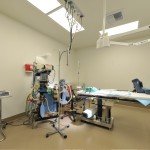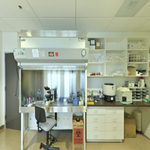About
Success
Treatment
Financial
Resources
Blog
Contact
Site Tools

Endometriosis and Infertility: Pregnancy Complications and Treatment Options for Infertility
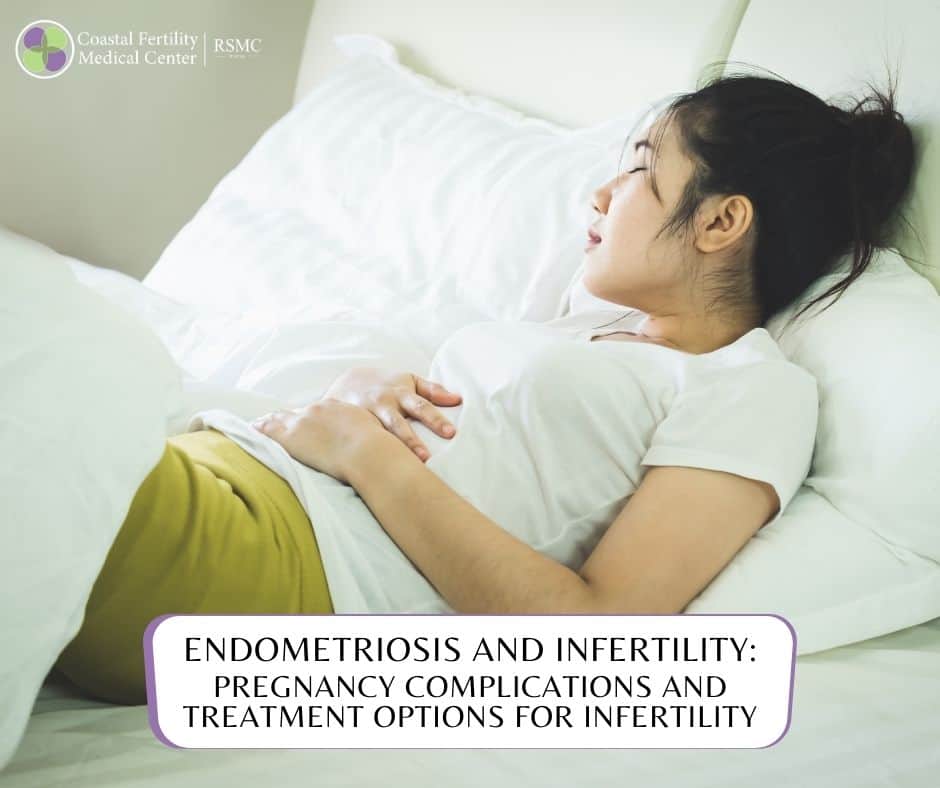
Infertility is one of the most common signs of endometriosis. 1 out of every 3 women with endometriosis have difficulty getting pregnant for reasons not well understood. Endometriosis has also been associated with a lower rate of live birth, and over 5.5 million American women are believed to have symptoms of this condition.
Fortunately, there are several medical treatments that can help you conquer infertility, and pregnancy itself may help ease the symptoms of endometriosis.
What is endometriosis?
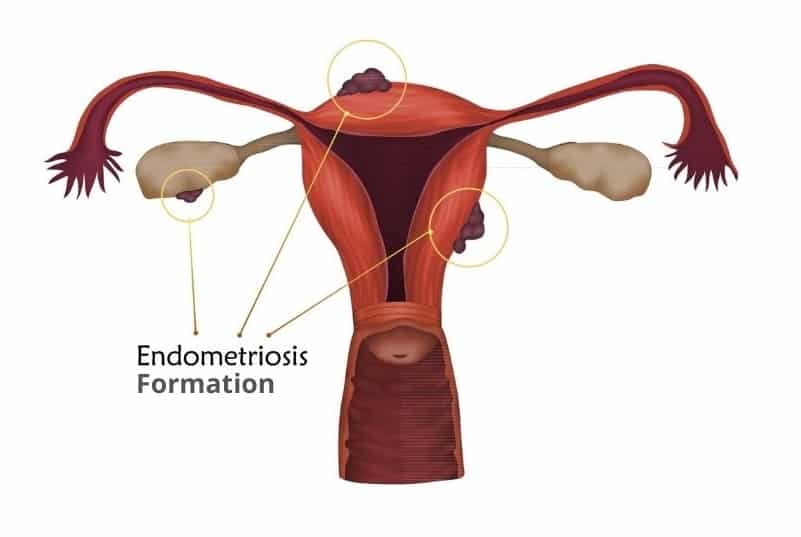
Endometriosis is a medical condition in which tissue like the one that lines the uterus grows outside the womb. The lining of the womb is referred to as the endometrium.
It occurs when endometrial tissue grows on the bowel, ovaries, and other organs in the pelvic region. While this tissue rarely extends beyond the pelvic organs, it is not impossible. Endometrial tissue found outside the womb is called an endometrial implant.
Women with endometriosis can have endocrine and ovulatory disorders, like impaired folliculogenesis, luteal phase defect, unruptured follicle syndrome, and multiple or premature luteinizing hormone surges.
The hormonal changes during your menses can affect the misplaced tissue, making it inflamed, irritated, and painful. This tissue will grow, become thicker, and finally break down. And since there is no way the tissue can exit the body, it may become trapped in the pelvis.
The trapped tissue in your pelvis may cause:
- Fertility problems
- Scar formation
- Irritation
- Painful periods
- Adhesions (in which fibrous tissue causes the pelvic organs to stick together)
Endometriosis is a common condition that affects around 10% of women. So, know that you are not the only one with this disorder.
Who is more likely to have endometriosis?
The condition is more common in women who:
- Are in their late reproductive years (in their thirties and forties)
- Have never given birth
- Started menstruating before age 12
- Have periods longer than 7 days
- Have menstrual cycles shorter than 28 days
- Whose mother or sister had endometriosis
Endometriosis: signs and symptoms
The symptoms of endometriosis can vary from person to person. Some women may have mild symptoms, while others may experience moderate to severe symptoms.
However, it’s important to note that the severity of the pain does not indicate the stage of endometriosis. You can have mild endometriosis and yet experience terrible pain. It is also possible to be suffering from the most severe form of the condition and have little discomfort.
Pelvic pain is a primary symptom of endometriosis. Women with this condition may also experience some of the following symptoms:
- Pain during menstruation
- Heavy menstrual bleeding (Menorrhagia) or bleeding between periods
- Cramps during menstruation
- Pain after sexual intercourse
- Painful bowel movements
- Lower back pain during the menstrual cycle
- Lower abdomen pain before and during menstruation
- Infertility
You may even experience no symptoms at all. Hence, it is important to undergo regular gynecological exams, which will allow your doctor to monitor any changes. This is very crucial if you have two or more of these symptoms.
Complications due to endometriosis
One of the most severe complications of endometriosis is trouble getting pregnant. Women with a mild form of the disorder may be able to conceive and give birth to a healthy child. However, approximately 30-40% of women with endometriosis experience difficulty becoming pregnant as well as other infertility issues.
Plus, women with endometriosis are at higher risk of:
- Premature delivery
- Cesarean deliveries
- Pre-eclampsia
- Placenta complications
The good news – there are plenty of women with endometriosis who later became pregnant and delivered a healthy baby.
You will want to have babies as soon as possible if you have been diagnosed with endometriosis and wish to have children. This is because your symptoms may get worse with time, making it difficult to become pregnant naturally. Your physician will assess you before and during your pregnancy. Speak with your doctor to know the options available for you.
Even if you’re not worried about fertility, the pain from endometriosis can be unbearable. Anxiety, depression, and other mental issues are also common. So, consult your doctor to know how you can manage these side effects. You can also consider joining a support group for encouragement and advice.
Cancer
Women with endometriosis are also at higher risk of ovarian cancer. Generally, women have a low risk of developing ovarian cancer, but some studies show that endometriosis raises that risk. However, an uncommon kind of cancer known as “endometriosis-associated adenocarcinoma” may develop later in women with endometriosis.
Endometriosis and infertility issues
One of the major complications of endometriosis is impaired fecundity.
Even though the exact cause of endometriosis is unknown, there are several reasons that can be put forth to associate this condition with infertility. Here are some possible reasons:
- Endometrial growths may block or alter the shape of the pelvis and women’s reproductive organs, making it near impossible for the sperm to reach the egg.
- The immune system that naturally helps combat diseases may attack the growing embryo.
- The endometrium (where the fertilized eggs first implant) may not develop properly.
Explanation
The first one has to do with cytokines, which are unfriendly molecules produced in response to the inflammation of endometriosis. Cytokines have a paralyzing effect on the sperm and egg, preventing fertilization from taking place.
The second reason is that this condition alters the pelvic anatomy. The inflammation caused by endometriosis may change the texture of the membrane lining the abdominal cavity (peritoneum). This can result in scarring and adhesions, which can lead to blockage of the fallopian tubes and ovaries, stopping the egg and sperm from meeting with each other.
Plus, the ovaries may refuse to ovulate, which causes eggs to become trapped in the ovaries. For conception to occur, an egg has to be released from the ovaries, move through the fallopian tubes, get “mixed” with sperm, and implant in the wall of the womb to begin development.
Endometriosis can cause the uterine tube to be blocked, preventing fertilization from taking place. These obstacles in the female reproductive tract can hinder pregnancy or lead to complicated pregnancies (like miscarriages).
The amount of endometriosis that is seen during laparoscopy has been linked to future fertility.
Staging system for evaluating endometriosis:
- Stage 1 endometriosis (minimal disease): In this stage, there are only a few endometrial implants, and no scar tissue is seen.
- Stage 2 endometriosis (mild disease): There are more implants, but only a small part of the abdomen is involved. Still, there is no scar tissue.
- Stage 3 endometriosis (moderate disease): There are several endometrial implants in the abdomen, which may be deep and create pockets of endometriotic fluid in the ovaries. Some scar tissues can also be seen around the fallopian tubes or ovaries.
- Stage IV endometriosis: There are a lot of implants, large cysts in the ovaries, scar tissue between the womb and the rectum ( distal part of the large intestine), and surrounding the fallopian tubes or ovaries.
Is It Possible to Become Pregnant If I Have Endometriosis?
Absolutely. Many women with endometriosis become pregnant. However, pregnancy may be more difficult to achieve when living with this condition. Researchers have estimated that around 50% of women struggling to conceive may have endometriosis.
Laparoscopy can improve the pregnancy rate of women with moderate-severe endometriosis. IVF is also a great option to consider if the patient fails to conceive months after the surgery.
Talk to your physician if you have endometriosis and are having difficulty getting pregnant. He or she should be able to recommend treatments to remove endometrial growths.
Treatment Options for Endometriosis Related Infertility
Medications don’t raise the chance of becoming pregnant. However, a lot of women have been able to conceive after their endometrial tissue is removed. If surgery doesn’t work in your case, you might want to undergo fertility treatments or IVF to improve your odds of having a baby.
Surgical treatments for endometriosis related fertility issues
Women with Stage 1 or stage 2 endometriosis may conceive on their own. However, research has suggested that infertile women are more likely to have endometriosis than women who have no trouble getting pregnant.
There is also evidence that pregnancy rates may increase if early-stage endometriosis is surgically removed (though some studies indicate it does not).
Generally, when the woman is still young (under 35), it may be sensible to surgically remove endometriosis to see if she will become pregnant. However, for women who are 35 or above with endometriosis, other fertility treatments should be advised instead of laparoscopy.
In the case of stage 3 or 4 endometriosis, pregnancy rates improved after scar tissue or huge endometriotic cysts are removed via surgery. If infertility persists after 6 months of the surgery, you may want to consider other treatment options, including IVF.
Unfortunately, women with endometriosis may have cysts that return once they are removed. If cysts are removed repeatedly, this may lead to a loss of eggs from the ovaries and make it harder to conceive.
Medical treatment of endometriosis-related infertility
A fertility evaluation is performed before beginning any fertility treatment. These can include blood and hormone testing and evaluating the male partner’s sperm. The right medical treatments depend on the stage of endometriosis.
Stage I-IIendometriosis: Clomiphene-IUI treatment
A fertility medication called clomiphene citrate is taken for 5 days once menstruation begins to improve a woman’s chance of becoming pregnant.
The male partner then masturbates into a sterile cup, and the collected sperm is brought to the fertility lab, where it is processed. The woman later visits the clinic when she is ovulating for the sperm to be placed into her womb using a tiny, hollow tube. This is performed during a speculum examination, and it feels like a Pap smear.
Women below 40 have approximately a 10% chance of having a baby with one treatment of clomiphene with IUI.
If the woman did not conceive after three months or so, other options that can be considered include (i) the use of fertility medications with IUI and (ii) IVF (in vitro fertilization).
Stage III-IV endometriosis
If pregnancy doesn’t occur within 6 to 12 months after surgical treatment of moderate-severe endometriosis, IVF may be recommended. In certain cases, the oviduct (Fallopian tubes) may be blocked and scar tissue may be severe. When this happens, the doctor may suggest going straight to fertility treatment with in vitro fertilization (IVF).
In-vitro Fertilization (IVF)
Before commencing this treatment, your doctor will let you know your chances of achieving pregnancy with IVF, depending on your age and hormone testing results.
During this treatment, women are required to take injectable fertility medications (trigger shot), which encourage many eggs to develop and mature inside the follicles (fluid-filled sacs in the ovaries).
These follicles are then monitored through blood and ultrasound tests, and when they grow to a particular size, the eggs are harvested from the ovaries. This is usually carried out under mild anesthesia.
The mature eggs are removed using a small, ultrasound-guided needle that is inserted into the ovaries through the vagina. The egg retrieval procedure takes approximately 10 minutes to complete.
Once removed, the eggs are placed in Petri dishes and “mixed” with the partner’s sperm in an IVF laboratory. The majority of these eggs will be fertilized and grow into embryos.
A few days following the egg retrieval, the woman comes back to the clinic, and the embryos are transferred into her uterus using a thin tube. This medical procedure feels like a Pap smear, and the likelihood of becoming pregnant with one IVF attempt is around 50% for women in their twenties to 10% for women in their forties.
Precautions and How to Boost Your Chances of Conceiving When You Have Endometriosis
There’s no evidence yet that that taking medications can raise a woman’s chances of becoming pregnant. However, medications, such as progestins, may be recommended to increase the levels of pregnancy hormones in a woman’s body.
Also, it is crucial to adopt a healthy lifestyle when you have endometriosis and intend to get pregnant. This may help reduce inflammation and prepare your body to help the baby grow and survive during the pregnancy
Help for Endometriosis-Associated Infertility
If endometriosis is the reason you have not been able to get pregnant, you may want to consult an infertility specialist. He or she can work with your physician to ascertain the severity of your endometriosis and what might be hindering you from becoming pregnant.
Here are some of the steps you may take:
- Keeping a healthy weight
- Eating a diet containing plenty of fruits, veggies, whole grains, and lean protein as food is attributed to raising fertility health
- Engaging in non-strenuous exercise every day (i.e., brisk walking, weight-lifting, and participating in an aerobic class)
Also, while there’s no way to prevent endometriosis, there are several lifestyle choices you can make to feel relieved. Regular exercise can help lower the pain due to endometriosis by improving the circulation of blood and raising the levels of endorphins, which are natural pain reliever in the body.
Bear in mind that age is the most important factor affecting a woman’s chance of becoming pregnant. Studies have linked higher pregnancy rates to younger ages. Women who are 35 or older are more likely to experience infertility and miscarriage compared to women in their early reproductive years.
Consider egg freezing
Endometriosis may also affect your ovarian reserve. For this reason, some doctors may advise that you freeze your eggs now that you are fertile if you wish to get pregnant later in the future.
However, note that egg freezing may be costly and is not usually covered by most insurance providers. However, Coastal Fertility is currently offering an egg freezing pricing special for your egg freezing journey! Take advantage while this lasts! Get the details here.
Bottom line
For most patients, endometriosis goes away as they reach menopause. A lot of women may also experience relief from the condition during pregnancy. In some cases, the symptoms just disappear. In fact, around one-third of women with a mild form of endometriosis will discover that their symptoms go away on their own.
Coastal Fertility Medical Center has helped hundreds of Intended Parents complete their parenthood dreams with the help of individualized fertility treatments. If you are finding it difficult to become pregnant due to endometriosis-related infertility or any other issues, we are here to help. All you have to do is, schedule a consultation with us.
Related Post
-
What is Azoospermia – Types, Causes, Symptoms, and Treatments
-
15 Things Doctors Want Women in Their 30s to Know About Their Fertility
-
Ovarian Hyperstimulation Syndrome (OHSS) – Causes, Risks, and Treatments
-
This IVF Pregnancy Success Video Is Going Viral On TikTok, And It’s The Most Adorable Announcement
-
End your week with these happy and heartwarming stories and videos
-
Fertility clinic shares IVF pregnancy success with parents-to-be in adorable video
Halloween 2019
Each year, Coastal Fertility Medical Center’s staff hosts a fun get together for our former patients and their families. View more photos from our 28th annual Miracle Babies Halloween event!Popular Searches
- Orange County Fertility Clinic
- Irvine, California Fertility Center
- Coastal Fertility Medical Center
- Free Fertility Seminar, Irvine CA
- In Vitro Fertilization and ICSI
- Best Orange County Infertility Doctor
- Southern California Fertility Specialist
- PGD, PGS Orange County
- Egg Donation and Surrogacy
Address
Coastal Fertility Medical Center15500 Sand Canyon Avenue
Suite 100
Irvine, CA 92618
©2024 | Sitemap | HIPAA/Privacy | Disclaimer and Privacy Policy
News from our Top Doctors

Our fertility clinic focuses on helping you build your family regardless of your sexual orientation or the gender you choose to identify with. We are even taking further steps to make LGTB people feel more welcome at our fertility clinic. Each of our patient-facing staff goes through LGTB training to let family-building clinicians provide necessary support and make you feel highly welcome.

Coastal Fertility Medical Center offers one of the most advanced fertility treatments and is completely transparent regarding the costs of procedures and any other expenses that you may have to pay before commencing your treatment. This differentiates us from some fertility clinics that reduce prices before the signing of the contract but charge you extra later on. We make sure our patients are well aware of any possible extra pricing that may occur over the course of their treatment.

The infertility industry is currently segmented, with each service or treatment being handled by a different provider. Our all-inclusive model simplifies an otherwise complex and difficult process. We are here to revolutionize the infertility industry by offering a one-stop-service model to assist our patients through infertility challenges while reducing physical, emotional, and financial risks.

Our globally respected team of specialists are helping improve IVF technologies to enter into a generation of better outcomes for infertility. Although you’ll have a doctor guiding you, you are also going to benefit from the experience and insights of other doctors during case review collaboration meetings, which take place every week. So, you won’t just rely on the expertise of a specialist but benefit from the knowledge of many reputed fertility experts.

Our team specializes in difficult cases and help patients who may have been considered “hopeless” at other fertility clinics. Thanks to our personalized solutions, expertise, and internal collaboration, weare able to maximize pregnancy success rates that are well above the industry average, even in difficult infertility cases.

We know that every situation is different and that everyone requires different treatments. Unlike facilities that take “a one-size-fits-all” approach for all cases, our fertility specialists use more than 40 customized protocols to raise the chances of success. The customized approach even extends to our fertility laboratory. Our on-site lab director and his highly-experienced team nurture every embryo and egg to increase the odds of success of each cycle.

Coastal Fertility Medical Center offers one of the most advanced fertility treatments and is completely transparent regarding the costs of procedures and any other expenses that you may have to pay before commencing your treatment. This differentiates us from some fertility clinics that reduce prices before the signing of the contract but charge you extra later on. We make sure our patients are well aware of any possible extra pricing that may occur over the course of their treatment.
Thanks for Joining!
We will be sending new updates soon.
You’re all set!
Your new patient forms have been submitted and received. We look forward to seeing you at your appointment.
Send us a message, we’ll be happy to answer any questions!
Please complete the form so we can best serve and help you with your journey towards parenthood.
On Demand Seminar Registration
Following the Preimplantation Genetic Screening process, which helps ensure there are normal chromosome numbers and detects possible genetic disorders, the most healthy embryo(s) are selected to be implanted into your or your chosen surrogate’s womb. 2 weeks after the transfer of the embryo, your physician will conduct a final blood test to determine the level of hCG (human chorionic gonadotropin) in your body. Increased hCG levels usually indicate a positive pregnancy test.

For fertilization to take place, the collected egg and sperm are combined in a petri dish and cultured in an embryo incubator. This dish is closely watched to check whether any of the eggs have been fertilized. Once the egg is fertilized, it is referred to as an embryo or a blastocyst on the 5th day of development. Our in-house embryologist carefully nurtures every embryo to the right time, even if it means working outside the standard business operating hours. For instance: If an oocyte is not mature, our laboratory will wait for it to mature and then ICSI it at the right time.
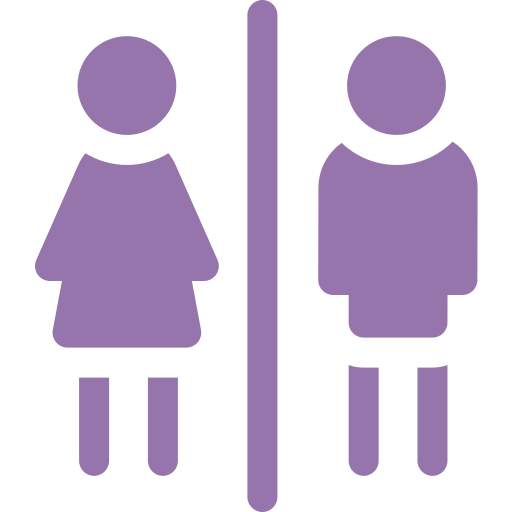
The egg retrieval is a slightly invasive medical procedure that takes about 20 to 30 minutes. You will be given an anesthetic to make you sleep for the duration of the procedure. Using ultrasound technology, your doctor will harvest your eggs transvaginally with a small, hollow needle connected to an ultrasound probe. Once your eggs are collected, your partner’s semen or donor sperm you have pre-selected is used for fertilization. The sperm are washed and prepared, and the top-quality sperm extracted is used to fertilize the eggs.

Your doctor will create a customized medication schedule that contains information about the fertility medications and hormone injections you have to take. Medication and injections are taken to encourage your ovaries to mature a large number of eggs for fertilization. Since women don’t respond to fertility drugs and hormones the same way, personalized protocols are crucial to the IVF cycle success. At Coastal Fertility, we will monitor you closely, letting you understand the changes occurring in your body and keeping track of how your egg follicles are growing.

On-site consultations typicallyinclude a standard fertility evaluation, consisting of a physical examination, complementary follicular ultrasound, and testing to enable your doctor to know your present fertility status and draw up a treatment plan.

This consultation includes a detailed medical evaluation with a doctor. You and your physician will review your health records and have enough time to talk about your goals and get answers to your questions. We recommend that you jot down all your questions before the visit to allow you to make the best use of the time spent with your doctor.

Your Reproductive Endocrinologist will take all factors into consideration and create a comprehensive plan of care, otherwise known as the treatment plan. This plan will include treatment recommendations from the physician and enable your financial coordinator to make a precise quotation once you meet.
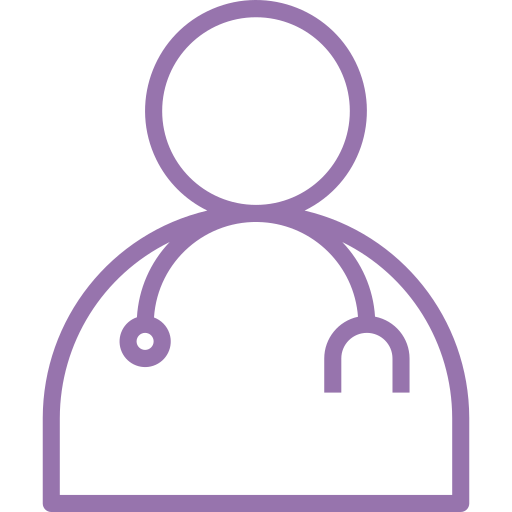
Our globally respected team of specialists are helping improve IVF technologies to enter into a generation of better outcomes for infertility. Although you’ll have a doctor guiding you, you are also going to benefit from the experience and insights of other doctors during case review collaboration meetings, which take place every week. So, you won’t just rely on the expertise of a specialist but benefit from the knowledge of many reputed fertility experts.

The infertility industry is currently segmented, with each service or treatment being handled by a different provider. Our all-inclusive model simplifies an otherwise complex and difficult process. We are here to revolutionize the infertility industry by offering a one-stop-service model to assist our patients through infertility challenges while reducing physical, emotional, and financial risks.

Our fertility clinic focuses on helping you build your family regardless of your sexual orientation or the gender you choose to identify with. We are even taking further steps to make LGTB people feel more welcome at our fertility clinic. Each of our patient-facing staff goes through LGTB training to let family-building clinicians provide necessary support and make you feel highly welcome.

We know that every situation is different and that everyone requires different treatments. Unlike facilities that take “a one-size-fits-all” approach for all cases, our fertility specialists use more than 40 customized protocols to raise the chances of success. The customized approach even extends to our fertility laboratory. Our on-site lab director and his highly-experienced team nurture every embryo and egg to increase the odds of success of each cycle.

Our team specializes in difficult cases and help patients who may have been considered “hopeless” at other fertility clinics. Thanks to our personalized solutions, expertise, and internal collaboration, weare able to maximize pregnancy success rates that are well above the industry average, even in difficult infertility cases.

Upon your arrival, you will check in with a Patient Care Coordinator. We will obtain your insurance information for benefits verification, a copy of your identification and take a picture for your electronic medical chart
Welcome to Coastal Fertility Family
Coastal Fertility is the leading provider of fertility solutions located in Orange County. Join us to get free updates on fertility news, treatments, infertility solutions and more.
Welcome to Coastal Fertility Family
Coastal Fertility is the leading provider of fertility solutions located in Orange County. Join us to get free updates on fertility news, treatments, infertility solutions and more.





